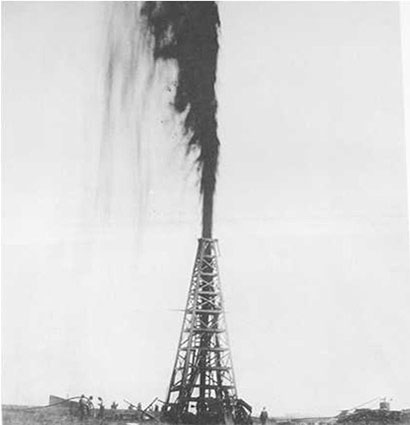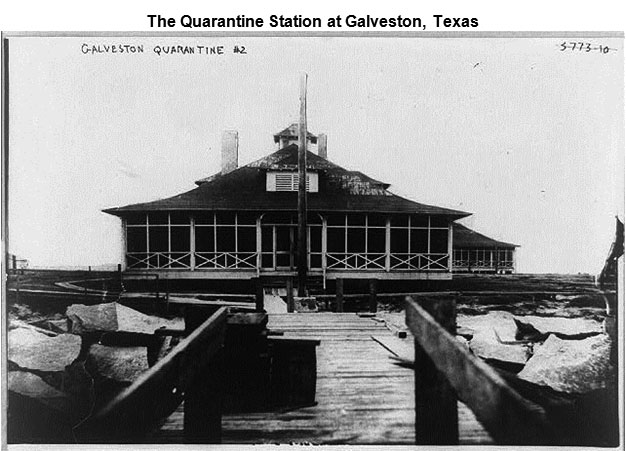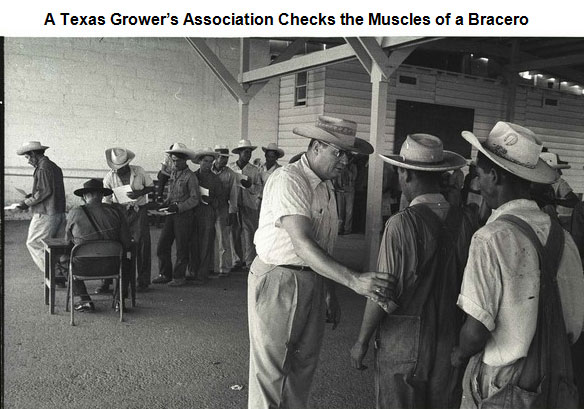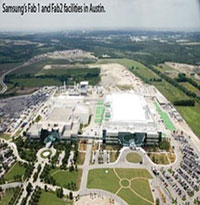
Source: Lucas gusher, Yassie, Wikimedia
By the end of the 19th century, a discovery in Corsicana, Texas led to a new industry that changed the Texas economy forever. Oil was discovered in this north Texas town. This discovery inspired others to search for oil in other Texas towns.
For Texas, the 20th century started with a boom - an oil boom! On January 10, 1901, oil was discovered at Spindletop near Beaumont. This discovery caused a major shift from an economy that had been driven by agriculture, to an economy now driven by the oil industry.
The discovery of oil in Texas caused an immediate migration of people from other states. People came to Texas to find work in industries that were associated with the oil discovery. Soon, oil was discovered in various places around the state and people began to migrate and settle in those areas.

Source: Lucas gusher, Yassie, Wikimedia

Source: Texas, Galveston-Quarantine no. 2
(The image above is the quarantine building in Galveston. Immigrants who were deemed unfit by immigration laws were housed there before they were allowed to enter Texas.)
By 1900, the population had reached 3,048,710 people. Immigration to Texas continued in the 20th century. Galveston was the port of entry for many immigrants during the 19th and 20th centuries. By 1906, the Federal government named the Galveston port an official immigration station. It is estimated that between 1865 and 1924 more than 200,000 immigrants came to Texas through the Galveston port. While many immigrants entered in Galveston, some entered through Texas and settled in other states.
Undoubtedly, most immigrants that came to Texas during the 20th century came from Mexico. The number of immigrants fluctuated in response to social and economic changes that occurred in the United States.
Click on the link below to analyze a map of Mexican immigration in Texas during the 20th century.
Step 1-Click on country dropdown (all countries) and select Mexico.
Step 2-Slide ruler to 1880.
How does Mexican immigration to Texas compare to that of other border states in 1880?

Step 3-Slide ruler to 1890, 1900, 1910, and 1930.
What happened to Mexican immigration to Texas during this time?

Step 4-Slide ruler to 1940 and 1950.
What happened to Mexican immigration to Texas during this time?

Step 5-Slide ruler to 1950 and each decade until 2000.
What happened to Mexican immigration to Texas during this time?

In the year 2000, where did most Mexican immigrants settle in Texas?

Mexican immigration to Texas was steady for most of the 20th century, with the exception of a few periods of time. Read more about those periods below.

Source: Mexicans deported 1931, Latin American Studies
During the 1930s, the Great Depression crippled the American economy. Many U.S. workers had lost their jobs and were struggling to provide for their families. The United States initiated a program of repatriation. In this program, the government deported Mexican immigrants, and even Mexican-American citizens to Mexico. As a result, there were several thousand Mexican immigrants who were sent out of the United Stated during the 1930s. Many immigrants who stayed on in the United States found that work was scarce, so they began to migrate across the country to find work.

Source: 1574, Bracero Archive
The Bracero program started in 1942. The United States and Mexico came to an agreement that contracted Mexican men would come to the United States to work for short periods of time. The men worked mostly in agricultural jobs. The workers were given clean, free housing, work insurance, and free transportation back to Mexico at the end of the contracted period. By the time the Bracero program ended in 1964, more than 4 million contracts for workers had been signed. Initially, Texas was left out of the program because the growers had been abusive to workers in the past.
In the 1970s and 1980s, Texas experienced an oil boom. Oil prices were high, and there were many jobs available in the industry. Immigrants were able to earn higher wages for low skilled jobs. Additionally, immigrants settled in Texas permanently.
By the 1990s, there were more changes in the immigration to Texas. Mexican immigrants still accounted for the highest percentage of immigrants, but people from other countries in Latin American began to make Texas their destination as well.
Dell Computer Headquarters in Round Rock |
Texas Instruments in Dallas |
Samsung's Fabrication Plant in Austin |

Source: Dell RR1, Eustress, Wikimedia |
 Source: North Campus Gate, Wikimedia |
 Source: Fab 1 and 2, Window on State Government |
High-tech companies such as Dell and Samsung opened headquarters or factories in Texas during the 1990s. This attracted a new type of immigrant to Texas. Highly skilled workers moved from other countries around the world to work in this industry. There were also more migrants from other states in the United States that moved to Texas to work in this industry, as well. The shift in the industry also attracted people from countries in Asia.